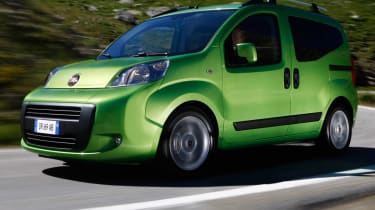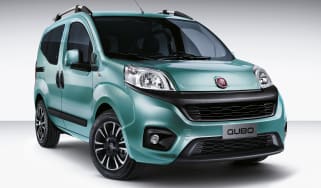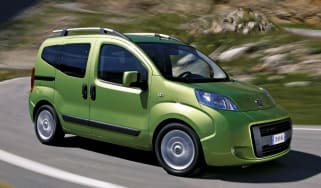Fiat Qubo review
Affordable and endearingly functional Fiat Qubo gets the job done, but lacks any sense of style or excitement

The Fiat Qubo is a small family car based on a commercial vehicle, just like its chief rivals the Peugeot Bipper Tepee and Citroen Nemo Multispace. This means it’s a cheap, robust and practical choice for transporting your family and their luggage, but it’s not unpleasantly spartan or lacking in charm altogether. Interior quality and equipment levels are reasonably good, the engine range is capable if not spectacular and there’s simply no denying the Qubo’s fantastic practicality: it will take furniture moves, DIY projects, holidays and trips to the recycling centre in its stride, while still offering a car-like driving experience and comfort.
Engines, performance and drive
The Qubo is certainly not a car you buy for its performance credentials. Customers have a choice of either 1.3-litre Multijet diesel or 1.4-litre petrol engines, and it’s the diesel that suits the car’s character best, offering a reasonable amount of low-down grunt to get you out of junctions or up hills when the Qubo is fully loaded with either passengers or luggage. The five-speed manual gearbox is disappointing, however, and any attempt at spirited cornernering will see you grappling with body roll due to the Fiat’s tall body and soft suspension. The latter does mean it rides fairly smoothly, however, so it performs well on a long-distance motorway run.
MPG, CO2 and Running Costs
Cheap to buy and very cheap to run, the Qubo is an ideal choice for those with a tight motoring budget. Both the 1.3-litre diesel and 1.4-litre petrol engines offer good fuel economy and low CO2 emissions, but the diesel is the better choice for those who regularly undertake long journeys or carry heavy loads, as it doesn’t have to be worked as hard as the petrol. Road tax and insurance are pretty much as cheap as they come, and servicing costs are reasonable, too. What’s more, the Qubo’s relative rarity on UK roads keeps used values quite healthy.
Interior, design and technology
Fiat established a tradition of unusually styled family cars with the original Multipla back in 1998, and the Qubo continues its legacy. No-one would call it beautiful or elegant, but there’s an honest functionality to its gawky, boxy shape that will appeal to some. Chunky wheelarches and side mouldings give the Qubo some road presence, while the roof rails are both a practical addition and a visual finishing touch for the exterior. The car’s huge glass area – a legacy of its commercial origins – gives both driver and passengers a fantastic view of the road around and ahead. Inside, robust plastics and appealing circular desing motifs dominate.
Practicality, comfort and boot space
Van-derived family cars excel when it comes to practicality, and the Fiat Qubo is a perfect example of this. Its luggage area holds 2,500 litres with the rear seats down – way in excess of even the biggest upmarket estate cars. With the seats in place, it will still take 330 litres, and passengers enjoy exceptional head and legroom as well. Sliding doors make accessing the Qubo’s vast cabin easy, even in tight multi-storey car park spaces. A deep glovebox and plentiful cabin storage complete the picture, but the large rear tailgate can be an inconvenience, as it needs lots of space to be opened fully.
Reliability and Safety
As the Qubo is based on the Fiorino van, it’s a bit lacking in safety equipment compared to more conventional family-car rivals. Front and side (but not curtain) airbags are standard, while electronic stability control is optional. The Qubo doesn’t have a Euro NCAP test score yet, but its near-identical sister model the Citroen Nemo only achieved three out of five stars when it was tested. Reliability is more promising: the Qubo’s commercial underpinnings are well engineered and designed to put with lots of harsh use, and its engines are used elsewhere in the Fiat range, so are well proven at this stage.



